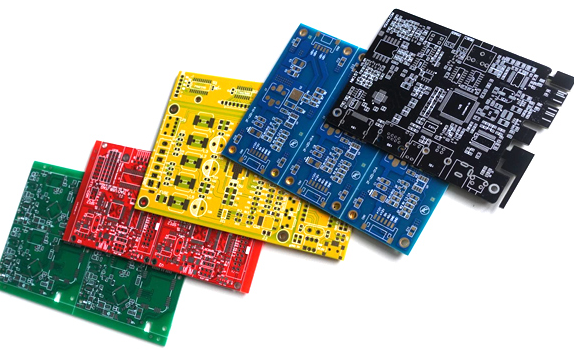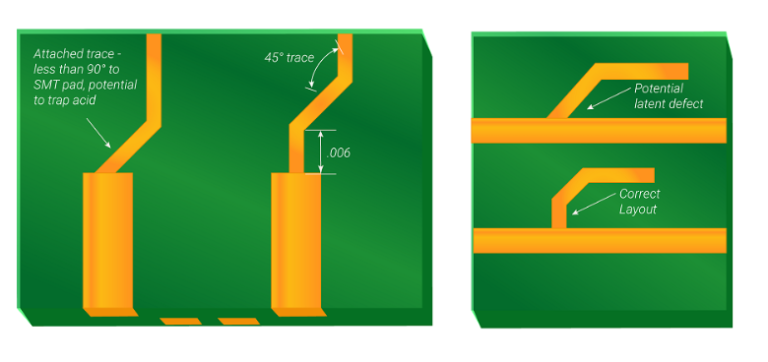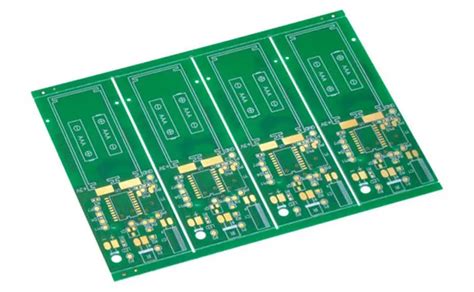Tips for replacing ICs to make PCB design more perfect
When you need to replace ICs in PCB circuit design, here are some tips for replacing ICs to help designers design PCB circuits more perfectly.
1.Direct replacement
Direct replacement means replacing the original IC with another IC without any modification, and the replacement does not affect the main performance and indicators of the machine.
The replacement principle is: the functions, performance indicators, packaging form, pin usage, pin number and interval of the replacement IC are the same. The same function of the IC not only refers to the same function, but also the same logic polarity, that is, the output and input level polarity, voltage, and current amplitude must be the same. Performance indicators refer to the main electrical parameters (or main characteristic curves), maximum power dissipation, maximum operating voltage, frequency range, and various signal input and output impedance of the IC, which should be similar to the original IC. The heat sink should be enlarged for low-power substitutes.

(1) Replacement of ICs of the same model
Replacement of ICs of the same model is generally reliable. When installing the integrated PCB circuit, be careful not to make a mistake in the direction, otherwise the integrated PCB circuit may be burned when powered on. Some single-row in-line amplifier ICs have the same model, function, and characteristics, but the direction of the pin arrangement sequence is different. For example, the dual-channel amplifier ICLA4507 has “positive” and “negative” pins, and the starting pin markings (color dots or pits) are in different directions: ICs without suffixes and ICs with suffixes “R”, such as M5115P and M5115RP.
(2) Replacement of ICs with the same model prefix letters but different numbers
This replacement can be directly replaced as long as the pin functions are exactly the same and the internal PCB circuits and electrical parameters are slightly different. For example: the accompaniment amplifier ICLA1363 and LA1365, the latter has a voltage regulator diode inside the 5th pin of the IC compared to the former, and the rest is exactly the same.
In general, the prefix letter indicates the manufacturer and the category of the PCB circuit. The numbers after the prefix letter are the same, and most of them can be directly replaced. But there are a few exceptions. Although the numbers are the same, the functions are completely different. For example, HA1364 is a sound IC, and uPC1364 is a color decoding IC; the number is 4558, the 8-pin is the operational amplifier NJM4558, and the 14-pin is the CD4558 digital PCB circuit; so the two cannot be replaced at all. So you must also look at the pin function.
Some manufacturers introduce unpackaged IC chips and then process them into products named after the factory, and there are also products that are improved to improve certain parameter indicators. These products are often named with different models or distinguished by model suffixes. For example, AN380 and uPC1380 can be directly replaced, and AN5620, TEA5620, DG5620, etc. can be directly replaced.
2.Indirect Replacement
Indirect replacement refers to a method of making an IC that cannot be directly replaced by slightly modifying the peripheral PCB circuit, changing the original pin arrangement or adding or removing individual components, etc., to make it a replaceable IC.
Replacement principle: The IC used for replacement can have different pin functions and appearances from the original IC, but the functions must be the same and the characteristics must be similar; the performance of the original device should not be affected after replacement.
(1) Replacement of ICs with different packages
For IC chips of the same type but with different package shapes, when replacing, just reshape the pins of the new device according to the shape and arrangement of the pins of the original device. For example, the AFTPCB circuits CA3064 and CA3064E, the former is a circular package with radial pins: the latter is a dual in-line plastic package. The internal characteristics of the two are exactly the same, and they can be connected according to the pin function. The dual-in-line ICAN7114, AN7115 and LA4100, LA4102 have basically the same package form, and the pins and heat sinks are exactly 180 degrees apart. The AN5620 dual in-line 16-pin package with heat sink and the TEA5620 dual in-line 18-pin package mentioned above have pins 9 and 10 located on the right side of the integrated PCB circuit, which is equivalent to the heat sink of the AN5620. The other pins of the two are arranged in the same way. Connect pins 9 and 10 and ground them for use.
(2) Replacement of ICs with the same PCB circuit function but different individual pin functions
Replacement can be carried out according to the specific parameters and instructions of each model IC. For example, the AGC and video signal outputs in the TV have positive and negative polarities. As long as an inverter is added to the output end, the replacement can be carried out.
(3) Replacement of ICs with the same type but different pin functions
This replacement requires changing the peripheral PCB circuit and pin arrangement, so it requires certain theoretical knowledge, complete information and rich practical experience and skills

(4) Some empty pins should not be connected to the ground without authorization
Some lead pins in the internal equivalent PCB circuit and the application PCB circuit are not marked. When encountering empty lead pins, they should not be connected to the ground without authorization. These lead pins are replacement or spare pins, and sometimes they are also used as internal connections.
(5) Combination replacement
Combination replacement is a method of combining the undamaged PCB circuit parts of multiple ICs of the same model into a complete IC to replace the IC with poor function. It is very suitable when the original IC cannot be purchased. However, it is required that the intact PCB circuit inside the IC used must have an interface lead pin.
The key to non-direct replacement is to find out the basic electrical parameters of the two ICs to be replaced, the internal equivalent PCB circuit, the function of each pin, and the connection relationship between the components of the IC. Pay attention to it during actual operation.
a. The numbering sequence of the integrated PCB circuit pins should not be connected incorrectly;
b. In order to adapt to the characteristics of the replaced IC, the components of the peripheral PCB circuit connected to it should be changed accordingly;
c. The power supply voltage should be consistent with the replaced IC. If the power supply voltage in the original PCB circuit is high, try to reduce the voltage; if the voltage is low, it depends on whether the replaced IC can work;
d. After the replacement, measure the static working current of the IC. If the current is much larger than the normal value, it means that the PCB circuit may be self-excited, and decoupling and adjustment are required. If the gain is different from the original, the feedback resistor value can be adjusted;
e. The input and output impedance of the replaced IC should match the original PCB circuit; check its driving ability;
f. When making changes, make full use of the pin holes and leads on the original PCB circuit board. The external leads should be neat and avoid crossing each other, so as to check and prevent the self-excitation of the PCB circuit, especially high-frequency self-excitation;
g. Before powering on, it is best to connect a DC ammeter in series in the power supply Vcc loop, and observe whether the change of the total current of the integrated PCB circuit is normal by decreasing the resistance of the voltage drop resistor.
(6) Replace IC with discrete components
Sometimes, discrete components can be used to replace the damaged part of the IC to restore its function. Before replacement, you should understand the internal function principle of the IC, the normal voltage of each lead pin, the waveform diagram and the working principle of the PCB circuit composed of peripheral components. At the same time, the following should also be considered:
A. Whether the signal can be taken out from the C and connected to the input end of the peripheral PCB circuit:
B. Whether the signal processed by the peripheral PCB circuit can be connected to the next level inside the integrated PCB circuit for further processing (the signal matching during connection should not affect its main parameters and performance).
If the IF amplifier IC is damaged, from the perspective of the typical application PCB circuit and the internal PCB circuit, it is composed of the audio IF amplifier, the frequency discrimination and the frequency conversion amplifier stage. The signal input method can be used to find the damaged part. If the audio amplifier part is damaged, it can be replaced with discrete components.






